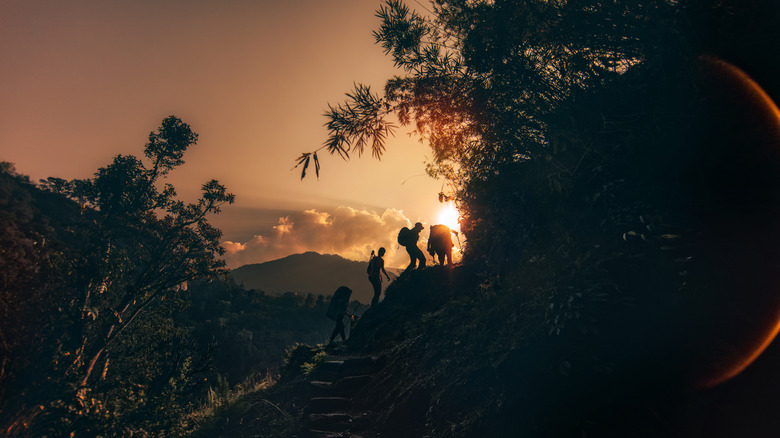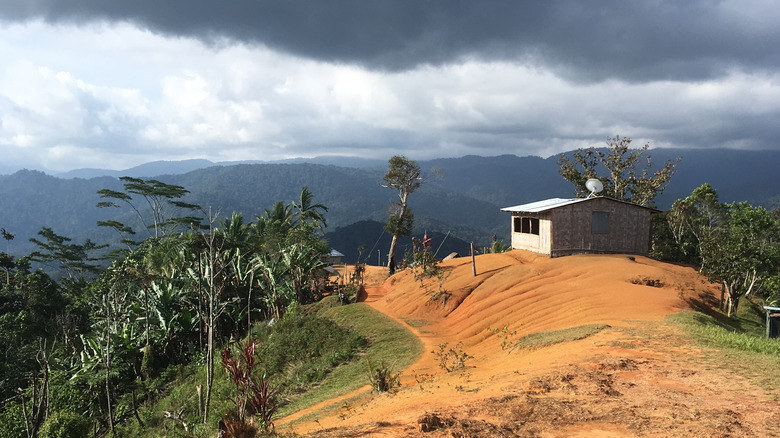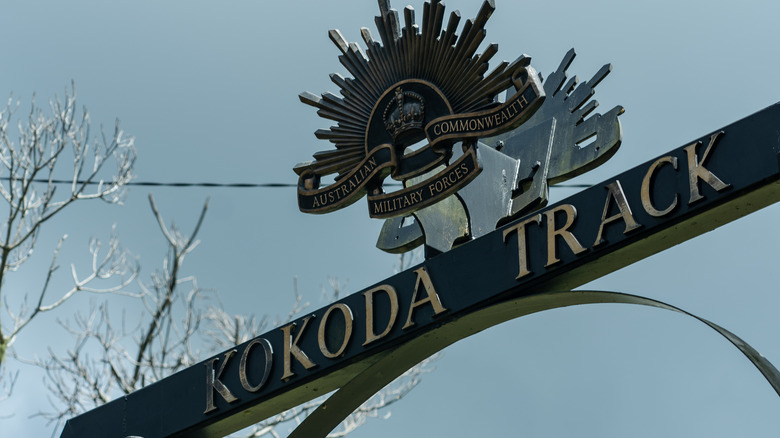This Southwest Pacific Island Is Home To One Of The Most Dangerous Trails In The World
Deep in the heart of the Southwest Pacific, Papua New Guinea harbors a trail renowned for its historical significance, challenging terrain, and untamed wilderness. The Kokoda Track, stretching over 50 miles through diverse landscapes and unyielding paths, stands as one of the most dangerous hikes in the world. The trail has tragically claimed the lives of many hikers over the years and has been called a "death zone" by local experts (via The Daily Telegraph).
The Kokoda Track is steeped in history, infamously known as the site of brutal battles between Japanese and Australian forces during World War II. Over 600 Australian and 10,000 Japanese soldiers perished during the devastating seven-month campaign. The trail's strategic position made it a focal point in the battle for control of the Pacific. Today, it attracts adventurers and history buffs alike, offering a profound connection to a dark past. Hikers will encounter several war monuments along the trail, such as the Kokoda Track Memorial Walkway and military remains from the 1942 campaign.
The track traverses steep, muddy slopes, dense tropical rainforests, and fast-flowing rivers — near-fatal slips and falls are a common occurrence. The climate is typically hot, with 80% to 95% humidity. Trekkers must be prepared to face extreme weather conditions, including torrential rain and intense temperature fluctuations from day to night. The trail involves significant altitude changes, with peaks reaching over 8,000 feet. This can lead to altitude sickness for hikers, making acclimatization and physical fitness absolutely essential.
Indigenous villages and biodiversity along the Kokoda Track
Completing the Kokoda Track typically takes four to 12 days, depending on weather conditions, fitness levels, travel pace, and the direction of the trek. The Kokoda trail connects from Owers Corner to Kokoda town and can be completed in either the North or South direction. The track passes through many remote villages where trekkers can experience overnight hospitality and the culture of local indigenous communities. These encounters provide a unique insight into the traditional way of life in Papua New Guinea.
The Kokoda Track paves through the Owen Stanley Range, one of the most biologically significant areas in the Asia Pacific. Trekkers will encounter a variety of plant and animal life, including 510 unique bird species, over 4000 plant species, and many endangered and endemic species. The trail cuts through some of the most pristine ecosystems on the planet, including savanna, cloud forests, grasslands, wetlands, and tropical rainforests — offering a chance to experience nature in its most unadulterated form.
As with any journey into delicate environments and indigenous territories, trekkers are urged to approach the Kokoda Track with diligence and care. Responsible tourism practices, such as following established paths, respecting local customs, and minimizing environmental impact, are essential to preserving this unique trail. The military pilgrimage spirit of the trail calls for additional sensitivity, as many Kokoda expeditions make stops at battle sites to pay homage to the fallen soldiers.
Essential planning and logistical information
While it may be daring and tempting to do the trek independently, the best way to walk the Kokoda Track is with a licensed tour operator. Local guides and porters will provide essential logistical support for this challenging hike and invaluable knowledge of the terrain, history, and cultural significance. Anyone who wishes to walk the Kokoda Track must obtain a trekking permit for around $100 — if you are booking a guided trek, this usually gets taken care of for you.
The difficulty and remote location make preparation for the long-distance hike crucial. The best time to go is usually during the dry season, from April to October. Hikers should undertake serious physical training, familiarize themselves with the terrain, and pack essential survival and camping gear. Dehydration, hyponatremia (low blood sodium), heat exhaustion, tropical illnesses, and various other health risks are all dangers to consider. Precautions such as vaccinations and anti-malarial medication are essential, and comprehensive travel insurance is an unquestionable must.
To get to the track, fly into Port Moresby, the capital of Papua New Guinea, where your tour provider will most likely coordinate transportation. The Kokoda Track Authority, the governing body that manages the trail, provides official information covering everything from planning guides to lists of licensed operators. There is even a Kokoda Race — the current record holder completed the trail in 16 hours and 34 minutes in 2008.


